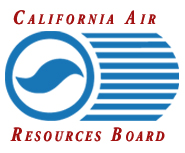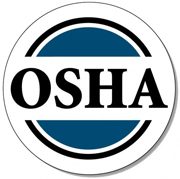3-Way Catalytic Converters / Catalytic Mufflers
Catalytic Exhaust Products Ltd. is a custom manufacturer of high performance 3-way catalytic converters for small and large engine applications. The three way catalytic converter is designed to operate on natural gas, propane and gasoline fueled spark ignition engines and will provide high-performance reductions in all major exhaust gas emissions. Carbon Monoxide (CO) can be reduced by up to 95%+, Oxides of Nitrogen (NOx) and Hydrocarbons (HC) by up to 90%+. Our 3 way catalytic converter is designed for ease of installation and reliable operation. The three way catalytic converters are available in three basic configurations: P-Model (Plain Fully Welded), F-Model (Clamped Style) or a full replacement Purifier Muffler. The three-way catalytic converter is great at reducing deadly indoor and outdoor emissions. Common applications for the three way catalytic converter system are lawn mower, commercial/garden, pressure washer, construction/industrial, generator, water pump, agricultural and forestry engine applications. Our sales, engineering, and manufacturing teams have the experience and expertise in a range of industries, ensuring your 3 way catalytic converter will meet or exceed your expectations.
The major catalytic oxidation reactions which occur are:
FOR OXIDES OF NITROGEN (NOx):
NOx + CO → N2 + CO2
NOx + H2 → H2O + N2
FOR CARBON MONOXIDE (CO):
CO + O2 → CO2
FOR HYDROCARBONS (HC):
H2 + O2 → H2O
HC + O2 → CO2 + H2O
Our 3-way catalytic converter features
- HIGH EFFICIENCY CATALYTIC COATING
Our Three Way Catalytic Converters feature a high quality Platinum-Rhodium coating which is very carefully distributed upon a uniform high porosity washcoat. The Platinum-Rhodium precious metal coating and washcoat are evenly dispersed onto a metallic alloy core. The net results are high efficiency non-selective catalytic reactions which lead to very low exhaust emissions. Pollutant conversion efficiencies in excess of 98% can be expected when used in conjunction with recommended air/fuel ratio controllers. - SUPERIOR THERMAL AND PHYSICAL STRENGTH
Our Three-Way Catalytic Converters are constructed of high temperature tolerant, corrosion resistant stainless steel alloys. Thick stainless steel alloy retainers are used to provide support and stability for the inlet and outlet faces of the metallic core. The effects of high thermal shock and severe vibration are minimized. The larger model catalytic converters (Models 12 SXT and higher) feature inlet flow diverters for even exhaust flow distribution and improved operating efficiency. - LOW EXHAUST GAS RESTRICTION
Our 3 way catalytic converters feature high strength, ultra-thin metallic core walls which impose a minimal exhaust gas restriction during operation. Even under high load/speed conditions the average engine operating efficiency is barely affected. Under normal circumstances the exhaust gas backpressure restriction will be in the order of 6.0” to 9.0” water gauge (depending on exhaust gas temperature). - LOW MAINTENANCE AND EASY INSTALLATION
Our Three-Way Catalytic Converters are designed for ease of installation and maintenance with minimal equipment downtime. A large variety of inlet/outlet cone termination configurations (NPT Male/Female pipe, ANSI Flanges, Tube O.D., etc.) are available.
FAQ
What is a 3 way catalytic converter?
A catalytic converter is a device used in emissions control systems. It reduces harmful exhaust emissions by converting toxic pollutants (byproducts of fuel combustion) into less toxic gases.
There are a few main types of catalytic converters but a three way catalytic converter (sometimes called a 3 way muffler) is the most efficient and most commonly used today. A 3 way catalytic converter oxidizes carbon monoxide and hydrocarbons, and reduces nitrogen oxides.
Catalytic converters can be used in internal combustion engines fueled by gas or diesel. They are most commonly associated with the engines of cars and other vehicles, but they can be used with a wide range of other engine types. For example, generators, water pumps, and lawnmowers can all use catalytic converters.
How does a three way catalyst work?
A catalyst is a chemical that speeds up a reaction while remaining unchanged. In a three-way catalytic converter, the catalysts are precious metals such as platinum or palladium. The role of the precious metals is to speed up the rate of the following reactions:
- Nitrogen oxides are reduced to nitrogen and oxygen.
- Carbon monoxide is oxidized to carbon dioxide.
- Unburned hydrocarbons are oxidized to carbon dioxide and water.
The converter itself is a metal box with two pipes. The input pipe draws in fumes from the engine, and the output pipe is connected to the exhaust. Inside the converter is a ceramic honeycomb structure that’s coated with the catalysts.
What are the different types of catalytic converters?
There are 3 catalytic converter types that you may come across:
- Two-way: A two-way catalytic converter is often referred to as an “oxidation” converter. It oxidizes carbon monoxide and hydrocarbons.
- Three-way: A 3 way converter does the same as a two-way, but also reduces nitrogen oxides to nitrogen.
- Three-way plus: Also referred to as a “dual-bed” converter, a three-way plus converter includes an air supply to increase oxygen levels. However, these converters are rarely used as they are not as efficient as current three-way converters.
- Platinum can act as a catalyst for both reduction and oxidation reactions.
- Rhodium acts as a reduction catalyst.
- Palladium acts as a catalyst for oxidation reactions.
What are the three most commonly used catalysts in a catalytic converter?
The catalytic converter core value is providing the catalysts for reactions that serve to lower harmful exhaust emissions. The most commonly used precious metals that act as catalysts in catalytic converters are platinum, palladium, and rhodium.
Other materials that may be used include cerium, manganese, iron, and nickel.
Do all cars have 3 way catalytic converters?
Due to emissions regulations in many countries, most cars manufactured from the mid-80s onwards will have a version of the current three-way catalytic converter.
Two-way catalytic converters were introduced in the 1970s when the United States Clean Air Act (CAA) meant that automotive manufacturers had to substantially reduce emissions. As such, you may see older cars that still have two-way converters.
Because these didn’t deal with nitrogen oxides, three-way plus converters were introduced. These were fairly quickly superseded by the more efficient modern three-way converters in the early 80s, but you may still see some three-way plus converters in older cars.












































